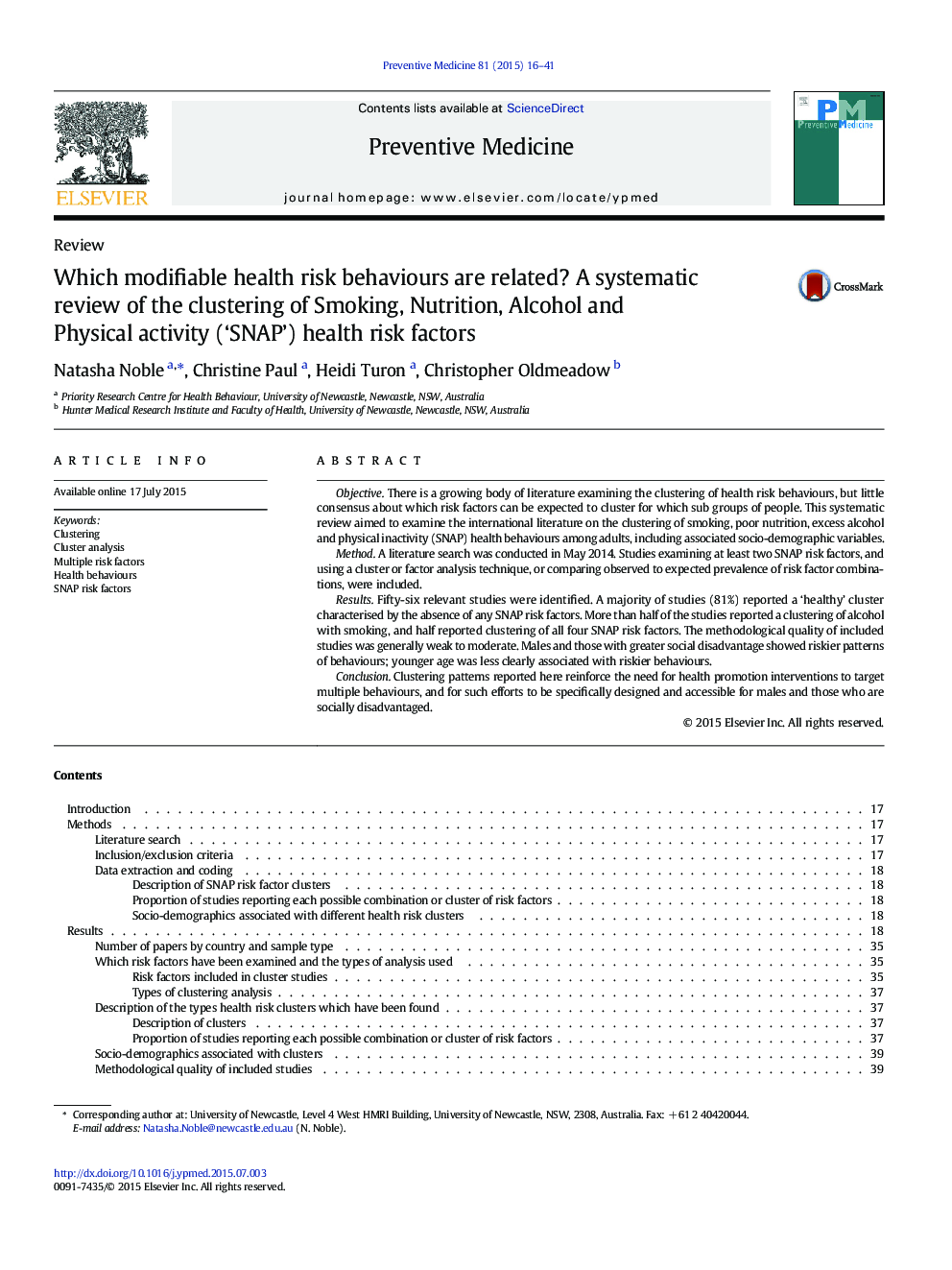| کد مقاله | کد نشریه | سال انتشار | مقاله انگلیسی | نسخه تمام متن |
|---|---|---|---|---|
| 6046373 | 1581633 | 2015 | 26 صفحه PDF | دانلود رایگان |

- There is little consensus about which risk factors cluster for sub groups of people.
- This systematic review examined the literature on clustering of SNAP risk factors.
- A majority of studies reported a 'healthy' cluster (absence of any SNAP risks).
- More than half of the studies reported a clustering of risky alcohol with smoking.
- Social disadvantage and male gender were associated with riskier patterns.
ObjectiveThere is a growing body of literature examining the clustering of health risk behaviours, but little consensus about which risk factors can be expected to cluster for which sub groups of people. This systematic review aimed to examine the international literature on the clustering of smoking, poor nutrition, excess alcohol and physical inactivity (SNAP) health behaviours among adults, including associated socio-demographic variables.MethodA literature search was conducted in May 2014. Studies examining at least two SNAP risk factors, and using a cluster or factor analysis technique, or comparing observed to expected prevalence of risk factor combinations, were included.ResultsFifty-six relevant studies were identified. A majority of studies (81%) reported a 'healthy' cluster characterised by the absence of any SNAP risk factors. More than half of the studies reported a clustering of alcohol with smoking, and half reported clustering of all four SNAP risk factors. The methodological quality of included studies was generally weak to moderate. Males and those with greater social disadvantage showed riskier patterns of behaviours; younger age was less clearly associated with riskier behaviours.ConclusionClustering patterns reported here reinforce the need for health promotion interventions to target multiple behaviours, and for such efforts to be specifically designed and accessible for males and those who are socially disadvantaged.
Journal: Preventive Medicine - Volume 81, December 2015, Pages 16-41